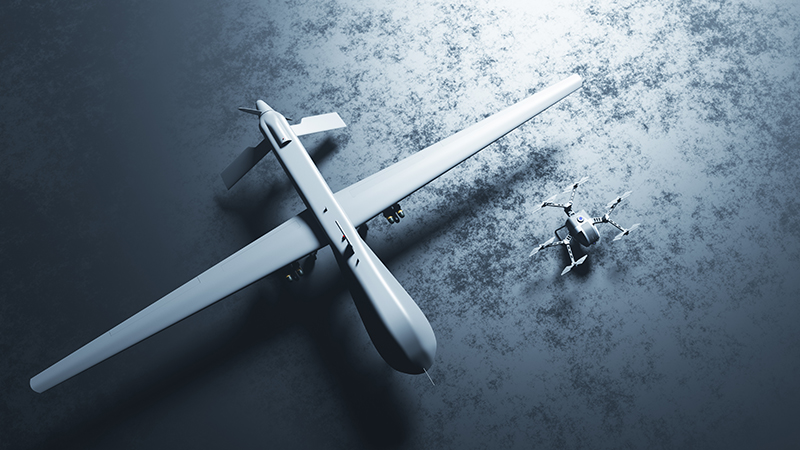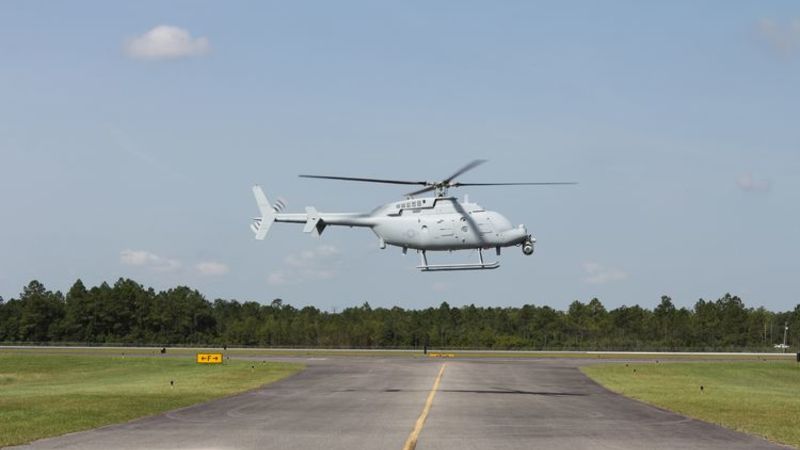

Artificial intelligence is a widely trending topic in any industry that involves technology and data. Aerospace and defence are no exception, where AI (and, by extension, unmanned systems) is taking on an ever-growing role.
Below, we’ll look at how AI and unmanned systems are overhauling aerospace and defence and what this could mean for the future of warfare.
Generally speaking, AI is the process of developing computer systems capable of handling traditionally human intelligence-based tasks. These can include automation, perception, translation and deduction, as well as data collection, decision-making and problem-solving.
These processes aren’t unique to aerospace and defence, but their application is incredibly relevant. For example, AI could help with everything from the computer-aided design of superior aircraft components to on-the-fly decision-making about threat levels and priorities.
Unmanned systems, at their most basic level, are vehicles that are controlled remotely (or autonomously). This includes unmanned aerial vehicles (UAVs) – or drones – unmanned ground vehicles (UGVs), and unmanned underwater vehicles (UUVs).
There are numerous benefits to unmanned systems in the defence sector that apply – to a lesser extent – to other industries. The main advantage is the reduced risk to human operators, as they can control vehicles from the comparative safety of a local base.
By extension, this means increased operational efficiency and cost-effectiveness. If nothing else, unmanned systems can be smaller due to them not having a driver or can carry greater payloads due to the lack of a driver. There have been plenty of real-world examples of unmanned systems that show these benefits in action.
But what happens when we combine unmanned systems with AI? Integrating AI into these systems helps enhance their capabilities and effectiveness by reducing the reliance on human data collection and decision-making.
One of the best-known autonomous military drones is the MQ-1 Predator and its later versions, the Reaper and Gray Eagle. While these are generally combat drones, autonomous technology has many other use cases, such as cargo delivery in combat zones and emergency response vehicles. As these technologies improve, we will likely see their deployment in civilian situations, too.
AI and unmanned systems – whether combined or separate – are here to stay in warfare. We will likely see both take on ever-increasing support roles, especially with the rise of eVTOLs and other changes to modern transport.
In turn, AI and unmanned systems could even change the very tactics we employ on the battlefield. For example, there could be an increasing shift towards single targets (such as a leader or essential figure) who could be dealt with using UAVs rather than large ground-based forces.
Equally, deploying autonomous vehicles on land and in the water will change how we conduct surveillance. It’s fair to say that human involvement will never completely end, but we’ll likely see far fewer people in combat-based situations.
But this rapid integration certainly carries some ethical considerations. A NATO review from 2017 lays out many of these in detail. On the one hand, using unmanned and AI-based systems removes human actors from potential harm. However, on the other, are these decisions that we want to completely put in the hands of machine algorithms?
While AI and unmanned systems aren’t new, their impact on the future of aerospace and defence is far-reaching. However, what this means in real terms remains to be seen.

